Attracting birds to your garden
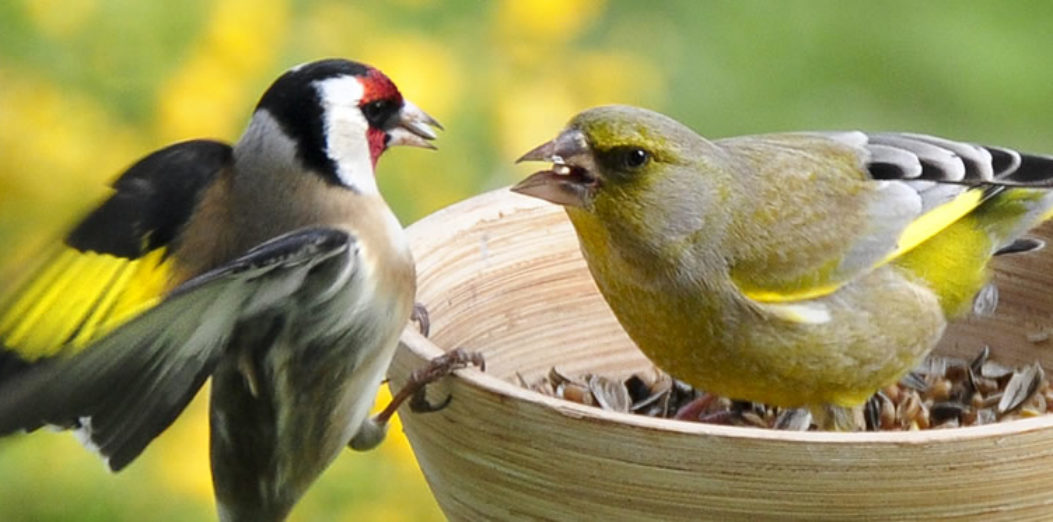
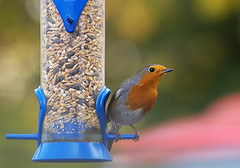 As a lifelong bird fan, I love seeing birds visiting my garden. Well yes, ok, some of them can be pests in terms of the mess they make (and admittedly, no-one wants their prize plant eaten or a promising crop of cherries nabbed). But there aren’t many people who don’t derive pleasure from the site of blue tits hanging acrobatically from a feeder or branch, or baby starlings taking their first flaps in the bird bath. At a conservation level, gardens are potentially very important and beneficial places for birds.
As a lifelong bird fan, I love seeing birds visiting my garden. Well yes, ok, some of them can be pests in terms of the mess they make (and admittedly, no-one wants their prize plant eaten or a promising crop of cherries nabbed). But there aren’t many people who don’t derive pleasure from the site of blue tits hanging acrobatically from a feeder or branch, or baby starlings taking their first flaps in the bird bath. At a conservation level, gardens are potentially very important and beneficial places for birds.
If you want to do more to attract birds to your garden, the good news is that it is easy. In fact, even a handful of plants in an otherwise barren plot will help. And making a garden attractive to birds can often add to it’s general appeal for humans too – bird feeders, bird baths and ponds can all be beautiful in their own right.
So here are your key tips:
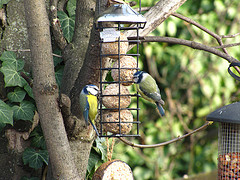 Provide cover so that birds can hide from predators, together with some perches as safe look outs. All plants help in this respect, but native trees are great, as are dense shrubs, or climber clad fences. If you are bemoaning a recent move to a home with an Ivy covered fence, save yourself the job and keep it as an Ivy hedge, simply trimming it every year (late Autumn) – the birds will love it both as cover and for nesting.
Provide cover so that birds can hide from predators, together with some perches as safe look outs. All plants help in this respect, but native trees are great, as are dense shrubs, or climber clad fences. If you are bemoaning a recent move to a home with an Ivy covered fence, save yourself the job and keep it as an Ivy hedge, simply trimming it every year (late Autumn) – the birds will love it both as cover and for nesting.- Provide food. This could be natural food such as berries from plants such as Cotoneaster, Pyracantha, Rowan etc, or seeds such as Teasel, or via plants which attract the insects which the birds love to eat. Garden features such as rockeries will attract slugs and snails – and also therefore, thrushes and blackbirds. An open expanse of lawn will attract larger birds to come looking for worms, and also birds like green woodpeckers looking for ants.
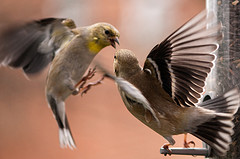 Bird feeders are great for providing food for the birds at all times of the year. Different types of feeds and food will attract different birds. The RSPB and BBOWT websites have specific information and advice that is worth checking out.
Bird feeders are great for providing food for the birds at all times of the year. Different types of feeds and food will attract different birds. The RSPB and BBOWT websites have specific information and advice that is worth checking out.- Locate bird feeders close enough to cover, but not too near to shrubs where predators such as cats might be lurking. Some people like to plant prickly plants near feeders to deter cats, although they can of course also be hazardous to humans!
- Provide water – it must be clean – for drinking and bathing. Bird baths, ponds and water features all have a role to play. It is worth bearing in mind that many containers can be converted into water features (via the use of flanges etc) – for example a shallow circular pot can be turned into a bespoke bird bath gently overspilling into a gravel area (and sump) below. Try searching on Google for inspiration and instructions.
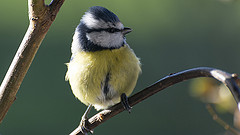 If you want your garden to be more than just a birdie restaurant, provide places for the birds to nest and roost.
If you want your garden to be more than just a birdie restaurant, provide places for the birds to nest and roost.
- Nest boxes are easy to install and may provide some fascinating bird watching opportunities up close. Unless the nest box is shaded, it should be positioned so that it is somewhere between north and east facing – providing shelter from direct sunlight and the wettest rain! More advice on siting a nestbox can be found on the RSPB website here.
- Also think about the more natural alternatives – providing enough shrubs, growing a native hedge (even just a short stretch of, say Hawthorn), or allowing (dare I say it) a small area of Ivy to grow on a patch of the fence.
- Be diverse. The wider the range of habitat, cover and food you provide, the more birds – and indeed other forms of wildlife – you are likely to find visiting your garden.
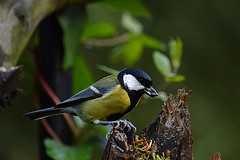 Be a tiny bit untidy. Most people like their gardens to be neat and tidy, but birds are more likely to feel at home in your garden if it is a little more natural. This doesn’t mean that your garden has to be a tip!! Even simple little things such as allowing the dandelions in your lawn (assuming your lawn isn’t so pristine that it never has them!) to go to seed occasionally will attract lovely little birds like Goldfinches into your garden (finches also love Niger seed – useful to know if you don’t have any dandelions to hand!).
Be a tiny bit untidy. Most people like their gardens to be neat and tidy, but birds are more likely to feel at home in your garden if it is a little more natural. This doesn’t mean that your garden has to be a tip!! Even simple little things such as allowing the dandelions in your lawn (assuming your lawn isn’t so pristine that it never has them!) to go to seed occasionally will attract lovely little birds like Goldfinches into your garden (finches also love Niger seed – useful to know if you don’t have any dandelions to hand!).
Photo credits: keith elwood, johndal, Dan Davison, nosha, petel vogel, Jacob Spinks.